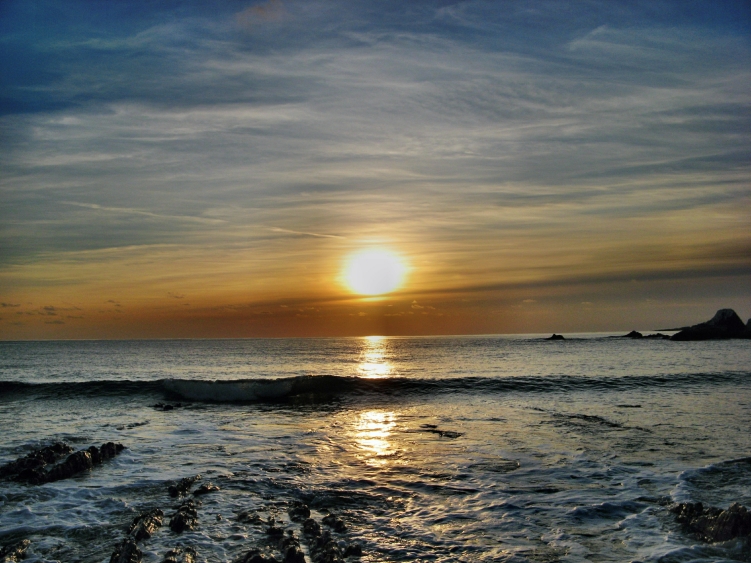
Photograph: © 2017, Living in Open Awareness
The art of being
Roy Whenary is a writer, poet, electronic music composer and creative photographer. He has lived in Devon, South West England, for 30 years and is currently based in the ancient town of Totnes. He is author of several books and ebooks, including The Texture of Being, as well as being the composer of many electronic music albums, including Starlight and Inner Peace.
In this week’s guest post for The Culturium, Roy discusses the power of poetry, the sound of silence and the beauty of living in Open Awareness.
Walking down
The Goldhawk Road
I can see
For millions of miles
No one ever looks up
As they trudge their way
Back home
At the end of the day
But if you look up
There is much more
To see than the
Double-decker bus to Acton
At school they said
That Jesus is the son of God
But I don’t think
He can be the only one
Walking to the bus stop
What about me and mum
The bus driver
The people in that pub?
We are all beneath the stars
We are all as small as each other
And if we care to look
We can see for millions of miles
—Roy Whenary, “Millions of Miles”
THIS POEM WAS born during a weekend movement workshop in May 2011, which my partner, Daniela Coronelli, and I were running (in Dartmoor and Dartington, Devon, UK), as a preliminary to a longer workshop some days later, with Indonesian movement artist and teacher, Suprapto Suryodarmo (known as “Prapto”), which we had also organized.
The theme of the workshop was “memory” and I led a session where the intention was to connect with a significant past memory, and from that, by using the art of movement, find a way of expressing that in the form of a poem. The idea was to explore the connection between memory, feeling and verbal/written expression, and how easily we were able to translate the feeling of a memory into words.
Some found it fairly easy and others not, but the above poem came to me very quickly, from where, I know not. I had not given that memory much thought over the years.
The theme of “the stars” has followed me throughout life, so far. Whenever there have been challenges, the default balancing mechanism has been to see what is happening in the moment, but also to realize that in terms of the vastness of the universe (symbolized by the stars in the night sky), whatever is happening, negatively (and also positively) speaking, is just a passing dream, and not to be taken as a source of depression, anxiety or even elation.

Photograph: © 2017, Living in Open Awareness
In my thirties, I composed and recorded several “New Age” style music albums, including Starlight (1987) and Inner Peace (1988). These followed on from many years of writing poetry (particularly between the ages of 16 and 30). The poems were creative expressions inspired by long-term spiritual enquiry. They were also a form of revisiting past insights and this no doubt served to embed them deeper within.
Early inspirations included Kahlil Gibran, Jiddu Krishnamurti and Nisargadatta Maharaj, amongst many others. In 1980/81, I met another spiritual teacher, Jean Klein, who shared his understanding of the Advaita Vedanta approach to life, in a very special, articulate and subtle way that was more an invitiation to be open—to listen, to see with clarity, without projection.
One of his books was called The Ease of Being, and this particular phrase stuck with me— “the ease of being”. We don’t have to put any effort into “being”. We already “are”. There is nothing we can do to become more of what we are. But we can become more conscious of being, rather than unconsciously being, and thus begin to let go all that we are not—all that we are merely imagining ourselves to be.
o0o
Nature reminds us, always, that individual life is fragile. Even the strongest, the fittest and healthiest eventually come to their demise. Even the most talented, the wealthiest, the most successful, powerful and famous come undone in the end. Life takes no prisoners and has no favourites.
When we look to the stars, we realize what an incredibly delicate path we walk through life … existing as we do on this planet, which dances around a modest-sized star, on the edge of a vast ocean of stars and galaxies. What claim can anyone have for anything? Clearly, any idea of an individual having independent power and importance is absolute nonsense in the grand scheme of things. When we lose sight of this, we begin to believe all the stories that human beings have invented and continue to invent.
o0o
Let us shift our focus from the world “out there”—nature, the universe, the stars and galaxies. If we look at the nature of mind and consciousness/awareness, it is the “inner” equivalent.
Where does our thinking come from? When we look at it, we see that in the beginning we knew nothing and we didn’t even speak a language. Then, bit by bit, we were taught how to live in the world, according to the norm in whatever nation, culture, religion, political situation and climate we were born into. For many, this is where growth ends and repetition begins.
But for others, this is not enough. It is not enough to simply accept what one has been told and just to continue one’s life repeating unquestioningly what we have been conditioned to believe about who we are and what the purpose of life is. This is where the real search begins—to find inspiration that will lead us beyond the mediocrity of the unquestioned life, even though there is no judgement of those who do not find their way to begin this search.
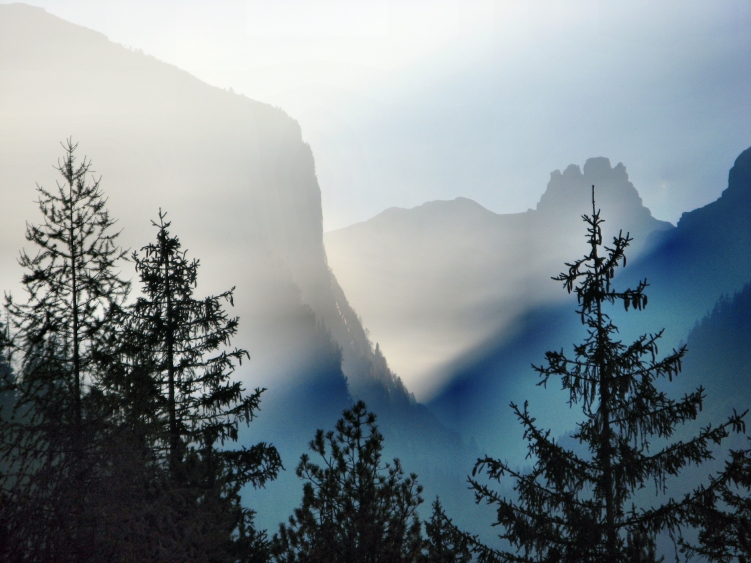
Photograph: © 2017, Living in Open Awareness
René Descartes famously wrote, “Cogito ergo sum” (usually translated as, “I think, therefore, I am”). The mirror view of this, therefore, is, “I don’t think, therefore, I am not”. On the one hand, I think, therefore, I have the feeling that I am something and if I don’t think, I have the feeling that I am nothing. Therefore, one can ask the question whether “thinking” is often used as a kind of avoidance behaviour, so as not to look at the big picture, where nature is telling us continuously that we are nothing?
In spiritual traditions, silence is an important element. The less we think, the closer it is possible to get to seeing things as they truly are, without the influence of thought, memory and past conditioning interpreting or twisting what is seen. The difficulty then lies in expressing what silence has taught us, using the loaded tools of language and thinking, which is influenced by how we have been programmed in our life.
So, from person to person, the expression will come out differently, and particularly if we come from totally different traditions, cultures or religions. This is one key reason why we need to develop the art of listening.
As long as I can remember, I have heard what is variously called “the nada sound”, “the sound of silence”, “anahata nadam”, “the unstruck sound”. For me, it is always connected with the stars, whatever the facts may be about the hearing of this soundless sound. But it is also connected with the art of listening. When we really listen, there is the background soundless sound and there is what appears in it.
Also, in life, there is Consciousness and there is what appears in it, which is what is continually arising from moment to moment. It seems that the human mind is programmed to always put everything that arises into one box or another—to categorize and define according to what is already “known”, or thought to be known.
When we stop doing this for a while, it is interesting to see and feel the effect of not putting everything into a box, and remaining simply open and awake to what appears—not judging, not interpreting. It is worth trying.
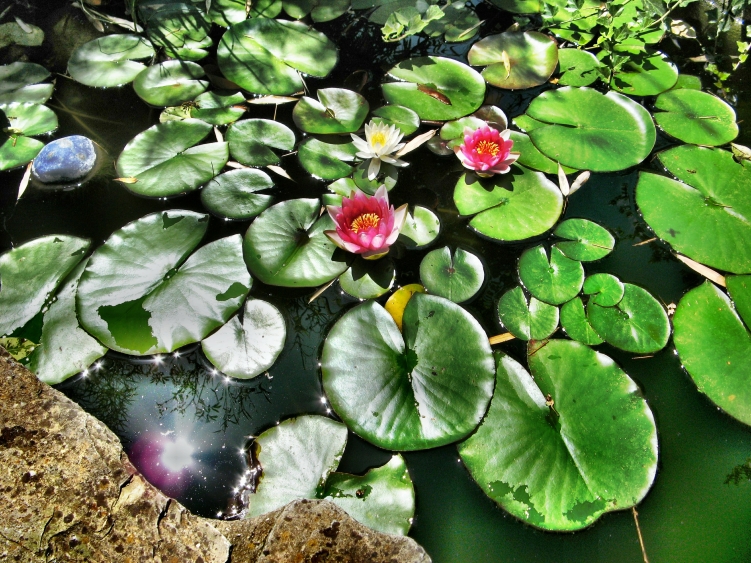
Photograph: © 2017, Living in Open Awareness
I feel that one of the big mistakes that human beings make is to bow to authority—be it that of the guru, the expert, the academic, the king, the leader. Anyone who assumes the positon of an expert or leader should be observed carefully, even while we may respect their position, their wisdom or expertise. And for the student/follower/admirer, giving one’s power away to an expert/guru/leader is not at all helpful, particularly if this is encouraged. At some point, looking at this, a poem came into being:
A teacher is an artist
and an artist is a teacher
Showing that you do not always
need to follow straight lines
But can bend with the curves of the mind
as it opens to all possibilities.
The artist paints a picture
and you stand back and admire
But if you follow the shapes
and the colours in your mind
You may really come to feel
the quality of the picture the artist paints
Then you put the artist on a stage
and ask him to sing
And he sings his song
with beauty beyond words
But you focus on him
and miss the point of the song
A teacher is an artist
and an artist is a teacher
If you see him as anything else
you miss the point
For he is not a solid rock of truth
as much as he is the flowing of the river
And the river enters the ocean
to which it was always pointing
And you, focussing on the river,
maybe do not see the ocean.
The ocean is vast
and a teacher is an artist
—Roy Whenary, “A Teacher is an Artist”
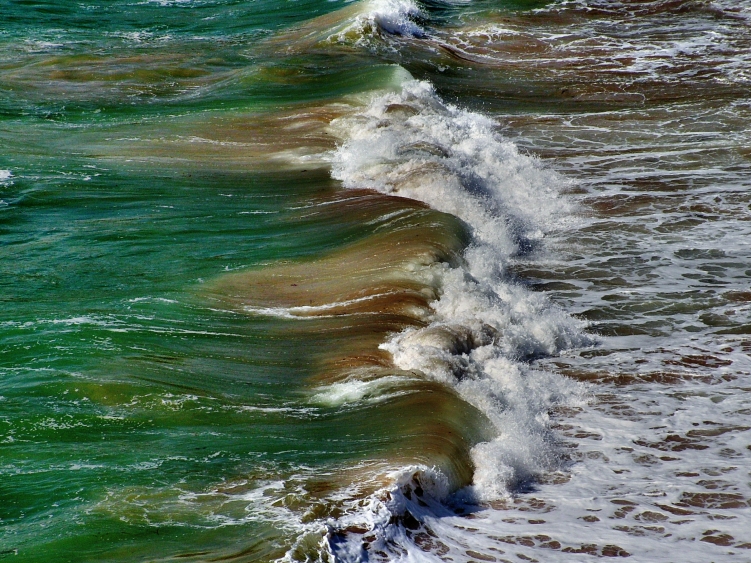
Photograph: © 2017, Living in Open Awareness
In 2002, I published my first complete book, The Texture of Being, which was an inspirational, and spiritually-focussed, nonfiction work, and the culmination of maybe thirty years of integrating a myriad of subtle insights and teachings, with several, serious book-attempts along the way. It is available as a free download.
Another book, Living in Open Awareness, came into expression around 2012 and is yet to be offered in book form, although it is available online as a free download.
Soon to be published is a collection of poems, to be called In the Mirror of Life. For some years, a freely downloadable ebook of the same title has been available (although the new book will contain new poems and not all the original ones).
For the past ten years or so, I have also had a passion for photography, albeit mainly of places where I have been and things I have seen—primarily in nature. The cycle of the seasons and the fading away of the years, moving through time, but being still in the centre, seeing everything passing like a dream, brings an awareness of the ridiculousness of capturing any image.
In looking back at photos of past places one has been, of people who have since passed on or who have simply disappeared from one’s life, there is an inner recognition of a process that is beyond our control. The nature of life is not necessarily orderly and is often random.
A photograph can convey the feeling within the photographer, in the moment it was taken. It is not just a record of a place in time. It is also an expression of what the photographer chose to give attention to, within a broader perspective, perhaps.
With modern post-production editing, this feeling sense can easily be enhanced, and even further developed. How skilfully the photographer is able to portray the scene or subject, with feeling, is the art. The act of stopping, even for a split second, taking in a scene, feeling it, and then choosing to take the photograph at that precise moment, can also be seen as a sort of practice in mindfulness.
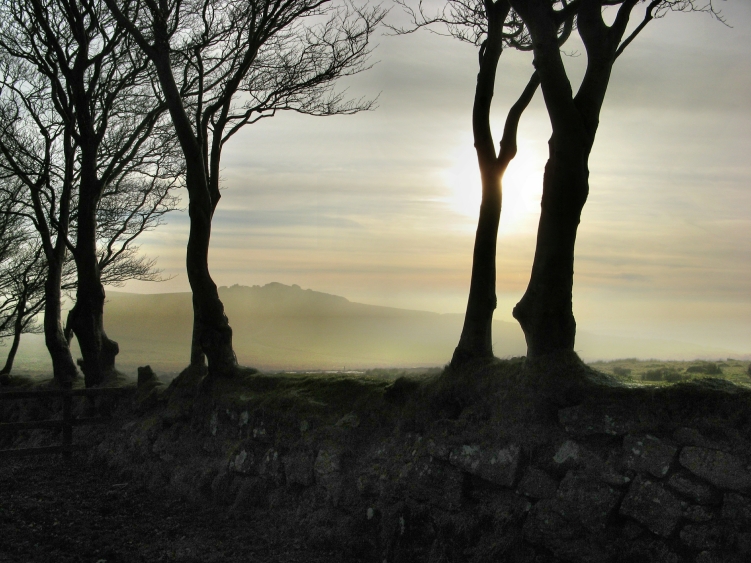
Photograph: © 2017, Living in Open Awareness
When we get involved in the story, we cease to be aware that we are acting in a story. We take it to be reality, when oftentimes it is merely the playing out of past patterns within the mind, on the stage of life. Nature reminds us of what lies beyond our daily activity.
Our physicality obliges us to function in a so-called “world”. This is the realm in which this bodily manifestation has its being. It can be said that all the problems that exist in the world are the result of humanity being enclosed in its own world of thought and repetition of the past—the conditioning, the habits and patterns from all that went before, which we have inherited.
When we stand back and look, and listen, without being involved emotionally in all that, we can see that it is all a passing dream. Sitting or standing as we are in the vast cosmic ocean of “be-ing”, we can see everything unfold as it is—if we only stop, look and listen.
The sense, “I am” (not the thought, “I am”), is fundamental in all living beings. It is “Life” itself, finding expression in a vast myriad of “be-ings”, each in a strangely different, though similar, form. But if we start to think that this “I am” is more special than any other “I am”, we are mistaken and deluded.
What divides humanity, above all, is the conversion of the natural sense of “I am” (which is Life itself) into the obsessive focus of “I am separate and special”, which is a contraction of the mind. This contraction of mind then leads to all the problems of humanity.
The reality is that there are no “special ones”. All are special, in a way, but Life/the Universe does not give excessive importance to the fragile manifestation of these bodily forms. It creates them and lets them be destroyed, in whatever way evolves for them.
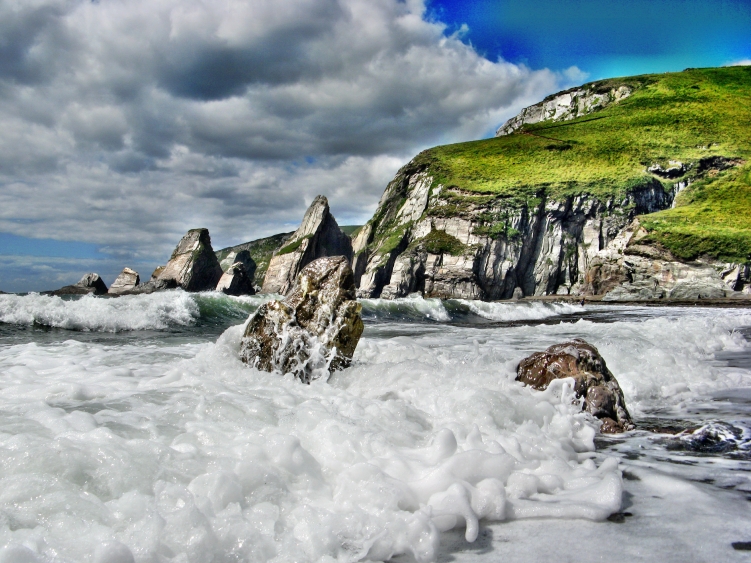
Photograph: © 2017, Living in Open Awareness
The awareness that arises within each individual is an invitation to see beyond the everyday appearance in the world. If that invitation is not taken up, then nothing is lost, and nothing is won if it is. Life remains. As Shelley wrote in his poem, “Adonais”:
The One remains, the many change and pass;
Heaven’s light forever shines, Earth’s shadows fly;
Life, like a dome of many-colour’d glass,
Stains the white radiance of Eternity,
—Percy Bysshe Shelley, “Adonais: An Elegy on the Death of John Keats”
In my late teens and twenties, I had a recurring dream that often came in the night. It was a memory of a moment in childhood—a beautiful memory, a joyous memory.
My family were holidaying in Cornwall, and we were having a day on the beach, on the North Cornish coast. We were picnicking by a stream, at the back of a long beach; there was a light, warm breeze. The sound of the distant waves, the trickling of the stream we were camped beside and the sounds of the ever-present seabirds, combined with the gentle rustle of nearby reeds, and the brilliant light of midsummer, somehow must have embedded in me a profoundly blissful and joyous memory that, in later years, just had to remind me that it was there, inside, and always available … that joy, in the moment, that memory of being in the moment, in nature, out of one’s mind.
For some, contemplating the transient nature of human life, of one’s own individuality, might be a source of depression. But we all must have, in whatever form, moments of joy and moments of deep distress that lie lodged in our minds. How we live today, in this moment, depends on which of these memories we feed. If we feed the negative, we will experience the negative.
But, if we find our source of joy—find that trigger that lifts our soul, that gives us abundant energy, then we are able to flow effortlessly through life, even when things are not going our way. Connecting with our inner joy gives us stamina beyond belief. Instead of always complaining, we say, “Thank you, Life,”—thank you for making all of this possible … this beautiful world, the stars and galaxies, and the silence … the silence that sings in our ears, if we only listen in Open Awareness.
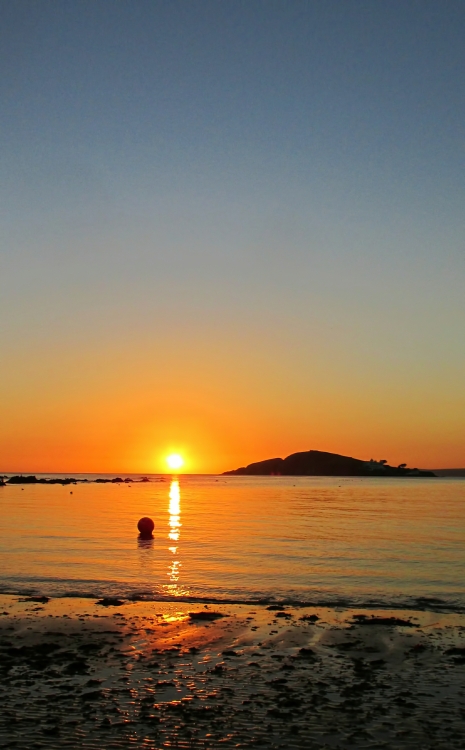
Photograph: © 2017, Living in Open Awareness
Post Notes
- The Texture of Being
- Living in Open Awareness
- In the Mirror of Life
- Starlight
- Inner Peace
- Living in Open Awareness website
- Saffron Lotus website
- Saffron Lotus Gallery website
- Jerry Katz: Let the Scene See You
- Danila Tkachenko: Escape
- Andy Richter: Serpent in the Wilderness
